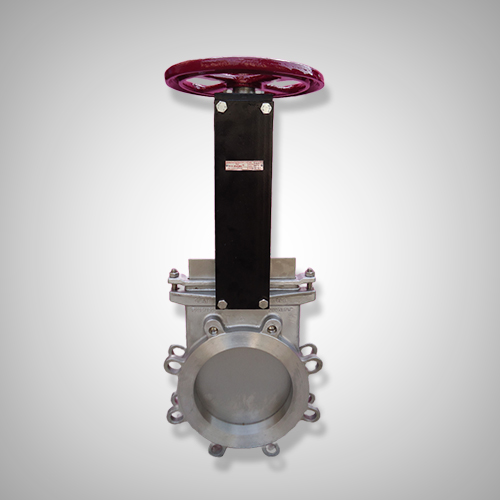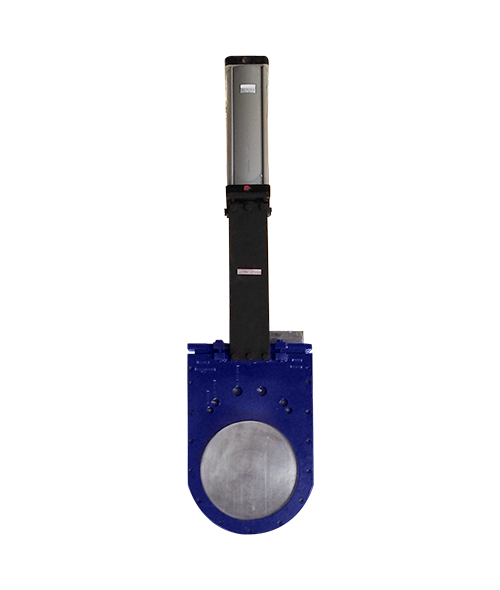Why Pneumatic Actuation Matters
In heavy-duty U.S. operations-mining in the Midwest, pulp-and-paper mills in the Northwest, and municipal wastewater plants nationwide-flow control with solids-laden media presents unique challenges. Manual knife gate valves cut reliably through slurry but can slow cycle times, increase manual intervention and risk exposure. Pneumatic knife gate valves automate the “cut-through” action, deliver repeatable, high-speed operations, and enable remote control from a safe distance. In this guide, we’ll cover the technical fundamentals, selection criteria and maintenance best practices-and demonstrate how Phoenix ValSteer (VALSTEER) delivers custom-engineered solutions optimized for your plant’s demands.
1. What Is a Pneumatic Knife Gate Valve?
A pneumatic knife gate valve integrates a sharp-edged gate body with an air-powered
actuator:
Valve Body & Gate
⇒ One- or two-piece design in carbon steel, ductile iron, or stainless alloys
⇒ Knife-edge gate slices through settled or fibrous media
Pneumatic Actuator
⇒ Double-acting or spring-return cylinders
⇒ Typical cycle time: 1–3 seconds
⇒ Remote control via solenoid valves and pilot air
VALSTEER Advantage: In-house machining ensures precise gate-to-seat alignment, minimizing hang-ups and air leakage.

2. Key Benefits of Pneumatic vs. Manual
| Benefit | Pneumatic Knife Gate Valve | Manual Knife Gate Valve |
| Cycle Speed | 1–3 s open/close | 15–45 s handwheel operation |
| Safety | Remote actuation keeps operators clear | Operator at valve face |
| Repeatability | Exact travel limits via switches | Operator-dependent feel |
| Integration | PLC/DCS control, feedback signals | Manual only |
| Throughput | Continuous automated cycles | Limited by manual labor |

3. Sizing & Pressure Class Considerations
1. Pressure Class
⇒ Class 150 (≤285 psi): Light-duty slurries, low-viscosity flows
⇒ Class 300/600 (740–1,480 psi): High-pressure chemical, mining or oil & gas service
2. Face-to-Face Dimensions
⇒ Compliant with API 609 / ISO 14313 for wafer or lug designs
⇒ VALSTEER supplies ANSI-drilled flanges per ASME B16.5 ratings
Expert Tip: Share your P&ID and media specs-our applications team will confirm optimal bore and slot dimensions to avoid erosion and jamming.
4. Material Options & Corrosion Resistance
| Material | Typical Applications | Max Temp | Corrosion Resistance |
| WCB Carbon Steel | General-purpose slurry | 400 °F | Moderate |
| Ductile Iron (DI) | Wastewater, power-plant ash | 350 °F | Good |
| SS 304/316 | Food, chemical processing | 600 °F | Excellent |
| Duplex / Super-Duplex | Offshore, desalination, produced water | 700 °F | Superior |
5. Maintenance Checklist & Troubleshooting
| Frequency | Task | Notes |
| Monthly | Inspect air-line & actuator seals | Use bubble test or soapy-water spray |
| Quarterly | Lubricate actuator piston rods | Apply ISO VG 46 pneumatic grease |
| Bi-Annual | Check stem packing & gland torques | Torque gland nuts to 10 ft-lb |
| Annual | Full strip-down & seat inspection | Replace seat if groove depth >0.5 mm |
Predictive Edge: Add optional position/torque sensors for real-time monitoring-ideal for zero-downtime maintenance strategies.
Automating your slurry-handling processes with pneumatic knife gate valves is a strategic investment in safety, efficiency and uptime. Phoenix ValSteer (VALSTEER) combines 40 years of valve expertise, in-house alloy machining and turnkey actuator integration to deliver reliable, low-maintenance solutions-nationwide across the United States.
Ready to upgrade?
Request your custom pneumatic knife gate valve quote at
[email protected] or call +91-9979889848 today.
Phoenix ValSteer Pvt Ltd. – Engineered to Perform

